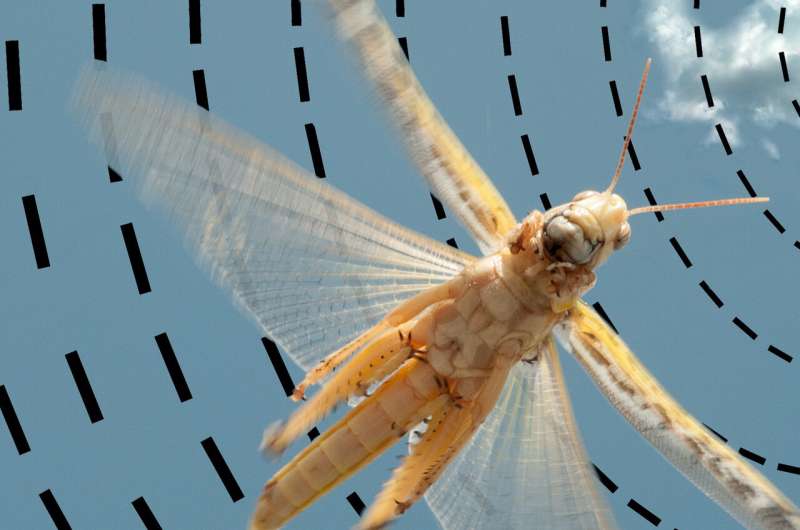September 30, 2020 report
Study shows how sun compass works in the brain of desert locust

A trio of researchers, two with Philipps-University Marburg, the other with the University of Würzburg, has discovered how a sun compass works in the brain of the desert locust. In their paper published in Proceedings of the National Academy of Sciences, Frederick Zittrell, Keram Pfeiffer and Uwe Homberg describe studying neuronal reaction to natural and polarized light in locust brains.
Prior research has shown that a species of African desert locusts (Schistocerca gregaria) is able to migrate long distances with great accuracy. It is also known that their destination is genetically determined. But how the locusts manage to find their way to their destination has been a mystery. Some in the field have theorized that the locusts are able to use both natural sunlight and polarized light (light that is polarized by scattering due to collisions with air molecules and which change due to the position of the sun in the sky) to navigate. In this new effort, the researchers sought to find out if this was the case, and if so, to learn how the locusts used both sources as a sun compass for orienteering.
The work involved first recording the way neurons responded to light as it traveled across the insects' entire visual field. The researchers were able to measure the activity of 23 of the neurons that responded to polarized light originating from 33 different directions. They also found that portions of the virtual sky created for the specimens had neurons that were sensitive to the angle of polarization, which was tuned to match the polarization patterns of the sun when it was in different parts of the sky.
The researchers then injected tracers that allowed them to identify those neurons responsible for encoding the horizontal positioning of the sun in the protocerebral bridge located in the central complex. They observed that neurons in the protocerebral bridge encoded 360 degrees of space. In looking at how the two kinds of light were processed in the brain, the researchers found that the central complex was acting as a navigational hub, taking in cues from the sky and using them to create a compass that allowed the locusts to navigate.
More information: Frederick Zittrell et al. Matched-filter coding of sky polarization results in an internal sun compass in the brain of the desert locust, Proceedings of the National Academy of Sciences (2020). DOI: 10.1073/pnas.2005192117
Journal information: Proceedings of the National Academy of Sciences
© 2020 Science X Network


















